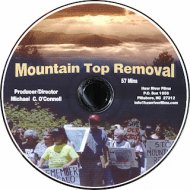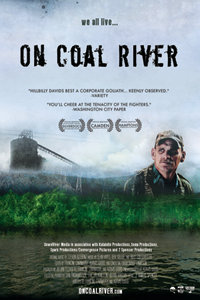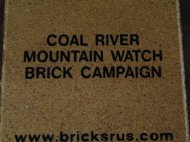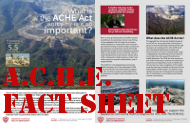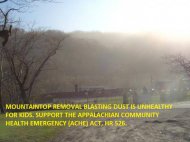
Endangered River
May 31, 2012
American Rivers named the Coal River among America’s Most Endangered Rivers® this month, shining a national spotlight on the threat mountaintop removal mining poses to clean water and public health. The announcement of the Coal is particularly timely, with the nation commemorating the 40th anniversary of the Clean Water Act this year, and Congress considering drastic rollbacks to clean water safeguards.
Coal River Mountain Watch's Tadpole Project hosted "Clean Up the Coal" on National River Cleanup Day, Saturday May 19th, in conjunction with this report. About two dozen people came to help clean up the Peachtree Falls area, a local treasure, and learn about chemical and biological sampling of the health of the river. "Clean Up the Coal" continues the Tadpole Project's efforts to beautify the Marsh Fork of Coal River. Over the summer the project plans to conduct sampling to assess the health of alltributaries of the Marsh Fork and "Clean Up the Coal" marks the beginning of that effort.
“There is a saying, ‘What we do to the land, we do to the people.’ In the Coal River valley, we see just how true that is. While Washington bureaucrats and elected officials play politics, we are facing a public health crisis. For the health of the Coal River and all who live on its banks, mountaintop removal must end,” said Mathew Louis-Rosenberg of Coal River Mountain Watch.
The extremely destructive practices of mountaintop removal mining and valley fills that bury and poison headwater streams pose a dire threat to the health of the Coal River and surrounding communities. Some of the largest strip mines in Appalachia exist in the Coal River basin. Approximately 20 percent of the river’s watershed is permitted for coal mining, and one-third of that area has already been mined. Over 100 miles of headwater streams have already been buried in the watershed.
A 5,000 acre project has been proposed that would level Coal River Mountain, one of the watershed's last mostly intact ridges, and dump the resulting “spoil” into nearby streams. Recent research shows elevated rates of cancer, birth defects, and other illness in areas with extensive mountaintop removal mining.
American Rivers and its partners called on Congress to restore Clean Water Act protections to the Coal’s headwater streams in order to prevent more destructive mining and permanently safeguard clean water and public health.
“In the last couple of years, much positive attention has been given and energy expended to entice local involvement and enjoyment of the lower reaches of the Coal River in Kanawha County,” said Cindy Rank of the West Virginia Highlands Conservancy. “And yet the smaller headwater streams miles upriver continue to be buried and polluted by giant coal mining mountaintop removal operations. It is here in these headwaters where the life and health of the river begins. And it is here where the connections between the health of the environment and the health of the people are most apparent. Protecting these small streams is essential for the long term health of both.”
“Of coal burned for electricity in the United States, only about 5 to 10 percent of that coal is mined by mountaintop removal. With energy efficiency measures available right now, we can easily use 20 to 30 percent less electricity. There’s simply no reason mountaintop removal should be allowed to continue. We can stop poisoning the endangered Coal River and improve regional health and save money if we end mountaintop removal,” said Ohio Valley Environmental Coalition project director Vivian Stockman.
The Coal River supplies drinking water for local communities, supports fish and wildlife, and boasts a water trail for fishing, boating, and other recreation. The Coal is West Virginia’s second longest river and is on the National Register of Historic Places. The Coal River has been named one of America’s Most Endangered Rivers® in past years – in 1999 and 2000 for the threat of mountaintop removal mining.
Now in its 27th year, the annual America’s Most Endangered Rivers® report is a list of rivers at a crossroads, where key decisions in the coming months will determine the rivers’ fates. Over the years, the report has helped spur many successes including the removal of outdated dams, the protection of rivers with Wild and Scenic designations, and the prevention of harmful development and pollution.






